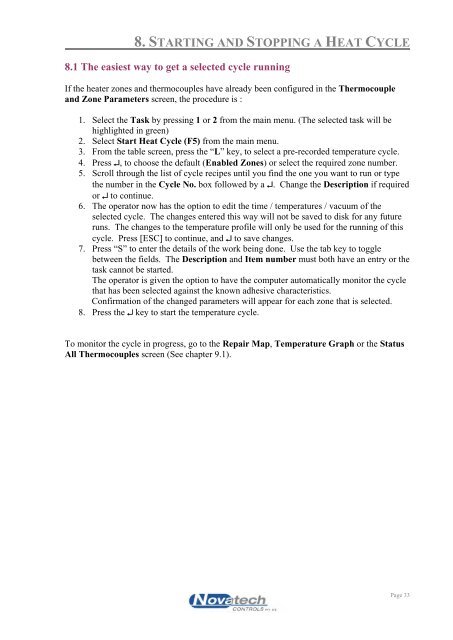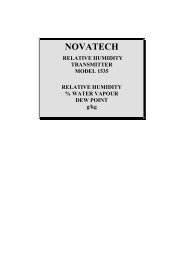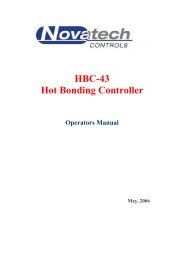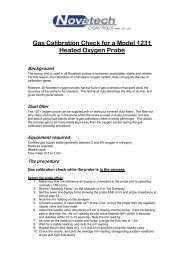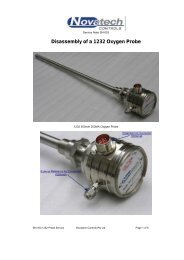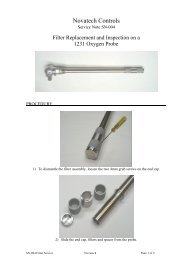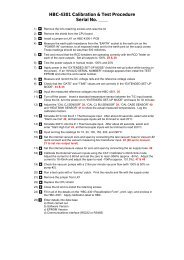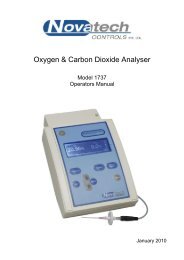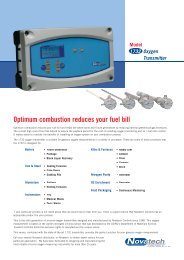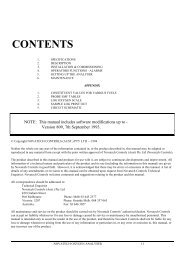HBC-4301 Operators Manual - Novatech Controls
HBC-4301 Operators Manual - Novatech Controls
HBC-4301 Operators Manual - Novatech Controls
You also want an ePaper? Increase the reach of your titles
YUMPU automatically turns print PDFs into web optimized ePapers that Google loves.
8. STARTING AND STOPPING A HEAT CYCLE<br />
8.1 The easiest way to get a selected cycle running<br />
If the heater zones and thermocouples have already been configured in the Thermocouple<br />
and Zone Parameters screen, the procedure is :<br />
1. Select the Task by pressing 1 or 2 from the main menu. (The selected task will be<br />
highlighted in green)<br />
2. Select Start Heat Cycle (F5) from the main menu.<br />
3. From the table screen, press the ―L‖ key, to select a pre-recorded temperature cycle.<br />
4. Press , to choose the default (Enabled Zones) or select the required zone number.<br />
5. Scroll through the list of cycle recipes until you find the one you want to run or type<br />
the number in the Cycle No. box followed by a . Change the Description if required<br />
or to continue.<br />
6. The operator now has the option to edit the time / temperatures / vacuum of the<br />
selected cycle. The changes entered this way will not be saved to disk for any future<br />
runs. The changes to the temperature profile will only be used for the running of this<br />
cycle. Press [ESC] to continue, and to save changes.<br />
7. Press ―S‖ to enter the details of the work being done. Use the tab key to toggle<br />
between the fields. The Description and Item number must both have an entry or the<br />
task cannot be started.<br />
The operator is given the option to have the computer automatically monitor the cycle<br />
that has been selected against the known adhesive characteristics.<br />
Confirmation of the changed parameters will appear for each zone that is selected.<br />
8. Press the key to start the temperature cycle.<br />
To monitor the cycle in progress, go to the Repair Map, Temperature Graph or the Status<br />
All Thermocouples screen (See chapter 9.1).<br />
Page 33


